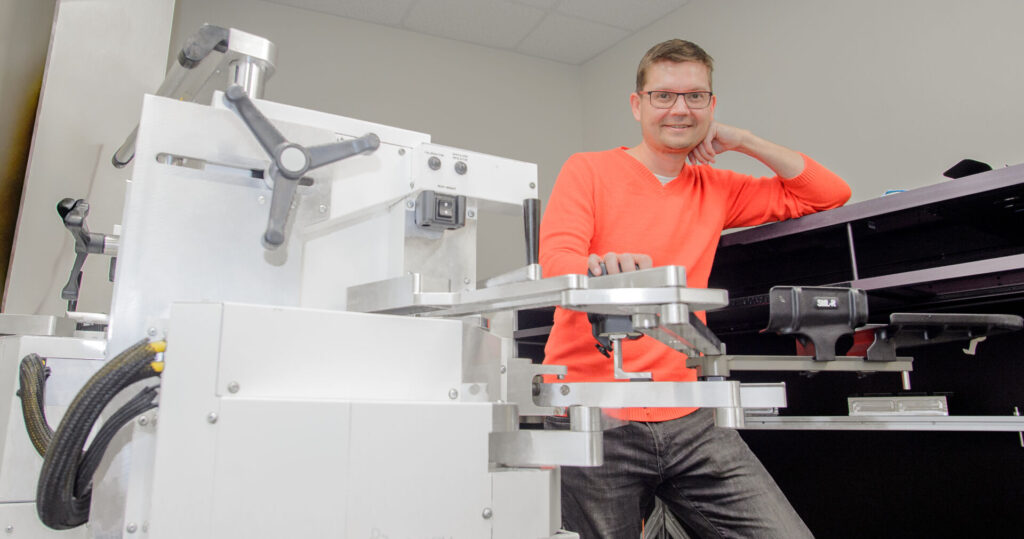
As we navigate our daily lives, our brains are not merely orchestrating our actions; they are also anticipating potential disruptions. A groundbreaking study from Western University, published in the prestigious journal Nature, reveals that our brains utilize sensory expectations to prepare for unexpected disturbances, enabling faster and more accurate reactions.
This transformative discovery not only enhances our understanding of the motor system but also opens new avenues for stroke and injury rehabilitation. Furthermore, it holds potential for advancing brain-computer interfaces, akin to those being developed by companies like Neuralink and Synchron, leveraging decades of neuroscience research to harness the brain’s predictive capabilities.
Proactive Motor Circuits
“We’ve discovered that motor circuits don’t passively wait for sensory signals, but proactively configure themselves to meet new challenges,” said Andrew Pruszynski, Canada Research Chair in Sensorimotor Neuroscience and a professor at the Schulich School of Medicine & Dentistry.
The Western research team, led by Pruszynski and Jonathan A. Michaels, employed a robotic device to nudge participants’ arms in various directions, occasionally providing cues about the likely direction of the push. Participants adjusted their movements based on these probabilities, with their muscles responding more effectively when the disturbance aligned with the brain’s expectations.
“This study, which took years of effort, highlights how much we still have to learn about how the brain works – and it underscores the importance of basic research in making such discoveries,” said Michaels, a former Banting and BrainsCAN postdoctoral fellow at Western and now an assistant professor at York University.
Unveiling Neural Mechanisms
The research team, including Western Research Chair for Motor Control and Computational Neuroscience Jörn Diedrichsen and psychology professor Paul Gribble, Pruszynski’s co-principal investigators in Western’s Sensorimotor Superlab, sought to uncover the neural mechanisms underlying these findings. They recorded thousands of neurons in monkeys performing a similar task, revealing that motor circuits adopt a preparatory state, anticipating each possible disturbance and linking it to the appropriate response.
Computer models of the arm, trained under similar conditions, developed the same predictive strategies, demonstrating how expectations naturally enhance arm control.
“We are 100 per cent committed to sharing this data as broadly and openly as possible. It will be mined, and already has been mined by other researchers, because it is unique and one of the most thorough datasets that exists today in the pursuit of understanding how the brain controls movements,” said Pruszynski, associate director of the Western Institute for Neuroscience.
Implications for Future Research
Pruszynski’s research primarily focuses on upper body motor skills, such as reaching and grasping, but he emphasizes that all human behavior relies on the coordination of large populations of neurons, making this dataset invaluable to other researchers.
“It is now more evident than ever that you can’t understand the brain fully by studying one neuron at a time,” he stated. “Much of how the brain works depends on the coordinated patterns of how neurons change and react to other neurons.”
For the study, the researchers utilized Neuropixels, an advanced technology now employed in human patients, featuring thousands of recording sites on a thin, 4.5-cm long probe. The results represent a quantum leap in knowledge advancement compared to 15 years ago when Pruszynski was completing his PhD.
“When I was in grad school, I was recording one neuron at a time and during my entire PhD, over seven years, I recorded about 1,000 neurons in total,” Pruszynski recalled. “Now we routinely get 1,000 neurons in just a day or two of recording. This productivity, with respect to the yield, allows us to ask questions that are just completely different and that you really couldn’t have asked before.”
The announcement comes as neuroscience continues to explore the intricacies of brain function and its implications for technology and medicine. The study’s findings could pave the way for new strategies in stroke rehabilitation and improved algorithms for brain-computer interfaces, offering hope for significant advancements in these fields.






